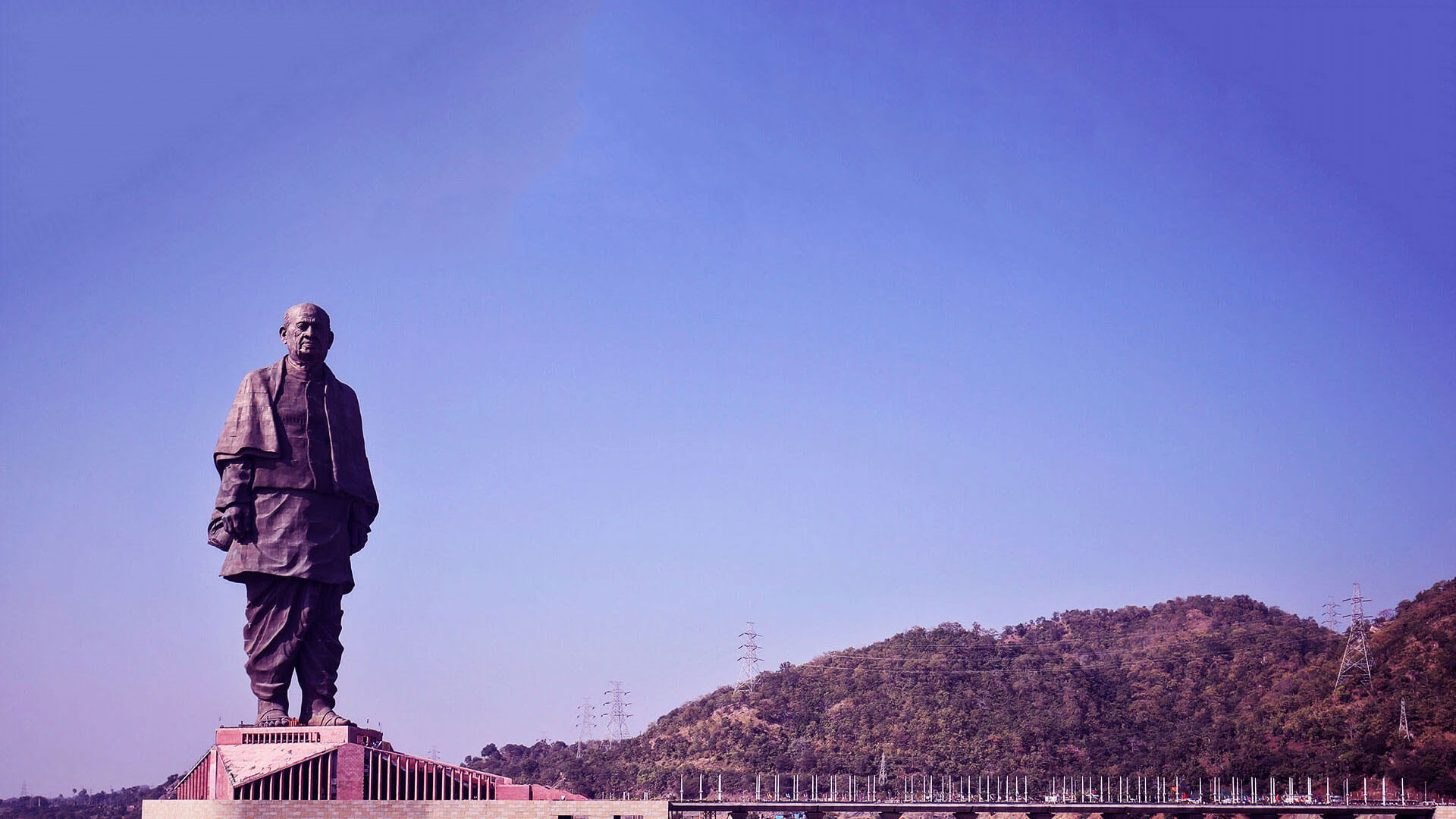The Queen’s Stepwell, or Rani ki Vav, is not just another ancient stepwell. It is an embodiment of architectural beauty built by Queen Udayamati, wife of King Bhima I, a Chaulukya king from the 11th century BC along the banks of River Saraswati in a small town called Patan in the Indian state of Gujarat. The UNESCO World Heritage Site title was conferred on this site in 2014 due to the marked talent of the craftsmen and their superior technical know-how about stepwell construction. The Heritage site showcases the richness and intricate detailing of the Maru Gurjara architecture, a work of indescribable and unparalleled beauty.
History of Rani Ki Vav
The stepwell structure dates back to the Chalukyan era. It is mentioned in the Jain book called Prabandha-Chintamani, written by Merutunga, a monk, in 1304. Rani Udayamati built the stepwell at Patan. The work was started in 1062, and it took about 20 years to complete the construction. Legends believe that the stepwell was dedicated to the memory of her husband, Raja Bhima I.
Much later, the stepwell was flooded and silted by the River Saraswati. In the 19th century, two British archaeologists visited the site and recorded the pit measurement of about 285 ft deep. Elaborate excavation at the site started in the 1940s. This was when the stepwell was excavated. In the 1980s, the Archeological Survey of India started the restoration work at the site and ever since has declared it a Monument of National Importance. UNESCO added it to its World Heritage Sites list on 22nd June 2014. In 2016, the site was named the country’s “Cleanest Iconic Place” by the Indian Sanitation Conference.
Rani ki Vav architecture
The style of Rani ki Vav architecture is the Maru-Gurjara style of architecture. It depicts the transformation from simple pit step wells to highly-evolved step wells, made with complex techniques and elaborate works of art and sculpture.
Stepwells have been an integral part of Indian history since the third millennium BC, especially in the sandy soiled areas of modern Rajasthan and Gujarat. These formed essential subterranean water resources and a means of water storage systems. While in the initial years, the ‘vav’ was more like a pit in the soil, over the next few centuries, the construction evolved as multi-storied structures incorporating detailed architectural and engineering intricacies. Rani Ki Vav is the perfect example of the same.
Rani ki Vav is in the form of an inverted temple that signifies the holiness of water. There are seven levels of stairs. Each level has sculptured panels. There are 500+ major sculptures on the entire site and about 1,000 minor ones. These works of art depict mythological and religious ethos and have a secular undertone. The core theme of the sculpted work at the historic site is focused on the ten incarnations of Lord Vishnu or the ‘Dasavataras.’ There is a reclined idol of the Lord on a serpent at the lowest water level at the stepwell.
Initially, it was a functional structure, a water management system with seven levels of stairs, a stepped corridor, four pavilions, a tank, and a well. The fourth level is directed to the rectangular tank that is about 23 metres deep. The well is situated on the western side of the site.
The sculpted panels of the site are a true depiction of artistic mastery. Not only is it aesthetic, but the craftsman has also used figurative motifs and kept a balance between empty spaces and filled proportions. UNESCO acknowledges the art and architecture of Rani ki Vav as an illustration of human creative genius, making it the key criterion for listing the site as a World Heritage Site. The other criterion is the engineering and technological mastery or advancement of the structure while maintaining the water's sanctity.
Information about Rani ki Vav
- Location: Mohan Nagar Society, Patan, Gujarat 384265.
- Timings: Visitors can visit the historic stepwell site from 8 AM to 7 PM throughout the year.
- Tickets: The applicable fee for Indians and residents of SAARC countries is Rs. 40/- per person, while for foreigners, the ticket price is Rs. 600/- per person. The tickets can be purchased physically from the ticket counter at the site itself.
- Best Time to Visit: The best time to plan a visit to Rani ki Vav is between October and March. The weather is pleasant and friendly, and the winter sun is not as hard-hitting as the summer sun. During the day, the right time to visit the site is early morning. The monument opens at eight in the morning when the sun casts a golden spell on the place, with the walls and the sculptures reflecting the rays. They appear to dazzle like gold.
Facts about Rani ki Vav
Here are some interesting facts about the Queen’s Stepwell:
- It is the only stepwell in the country and across the globe to get listed by UNESCO as a World Heritage Site.
- In a country where most of the monuments are built by kings and many of them dedicated to their wives, Rani ki Vav is the only one of its kind that a queen has made and dedicated to her husband.
- It gets a spot on the new 100-rupee currency notes of India.
- The last leg of the stepwell has a gate that is the opening for a tunnel leading to Sidhipur, a town close by. The tunnel is about 30 meters long.
- About 50 years back, the stepwell was surrounded by medicinal herbs and plants. Along with the flora parts, the water from the stepwell was used to cure diseases and viral fever by the locals.
Places to Visit Near Rani ki Vav
- Sahastralinga Talav: This is a man-made water storage tank that dates back to the time of King Sidharaj Jai Singh from the Chalukyan era. This structure also belongs to the 11th century BC. it is built in a way that it gets water supplied from River Saraswati.
- Modhera Sun Temple: This temple is located about 35 km from Patan, on the banks of River Pushpavati. The entire complex is dedicated to Surya or Sun God. It was constructed during the 11th century BC by King Bhimdev I from the Solanki Dynasty. The construction is such that the first rays of the sun fall on Lord Surya’s idol placed inside the temple. It is a protected site and is a part of the UNESCO World Heritage Site.
- Panchasara Parshwanath Jain Derasar: This Jain Temple is located about 2 km from Patan Railway Station. It is the largest Jain temple complex in the city. It was built in 746 CE by King Vanraj Chavda and is dedicated to Shri Parshwanathji. The complex consists of about 51 small temples and one main temple. The temple is adorned with white marble floors and stone carvings that are typical of Jain architecture. The main temple is about 180 feet long and 90 feet wide.
- Bindu Sarovar: It is located about 27 km from Patan. It is a holy pond in Siddpur and is on the banks of River Saraswati. Legends have that the tears of Lord Mahavishnu had fallen into the pond. Hence, it is considered sacred by locals. Of the five sacred teerthas in India, this is one of the places.
How to Reach Rani ki Vav?
Patan is about 125 km from Ahmedabad in Gujarat. Rani ki Vav is one of the main attractions in Patan.
- Nearest Airport: Ahmedabad International Airport (125 km)
- Nearest Railway Station: Patan Railway Station (4 km)
By Air. The nearest airport is the Sardar Vallabhbhai Patel International Airport in Ahmedabad. The airport is well-connected with most cities within India and also major cities abroad. One can travel by road from Ahmedabad to Patan by a private car, a cab, or a bus. The trip takes anywhere between 3 to 5 hours.
Here is a list of Indian cities from where flights are available to Ahmedabad
By Train. The nearest railway station is Patan Railway Station, located at a distance of about 4 km. There are many trains between Ahmedabad/other cities in Gujarat and Patan. These are passenger trains, and it takes about three hours from Ahmedabad to complete the journey.
By Road. The nearest bus stand is the Patan Bus Stand. It is about 1 km from the monument. There are multiple ways of travelling by road, including government-run buses, private cars, cabs, and taxis.
- Distance from Gandhinagar. 110 km
- Distance from Ahmedabad. 125 km
- Distance from Vadodara. 235 km
- Distance from Surat. 390 km
Frequently Asked Questions Rani ki Vav
Question1. Who built Rani ki Vav?
A. Rani ki Vav was built in the 11th century BC by Rani Udayamati, the wife of King Bhima 1, in his memory.
Question 2. Why is Rani ki Vav famous?
Ans. The site is a World Heritage site and is an exemplary showcase of aesthetic sculpture and complex engineering detailing.
Question 3. In which state is Rani ki Vav located?
Ans. Rani ki Vav is located at Patan in Gujarat, India.
Question 4. On which note is Rani ki Vav?
Ans. Rani ki Vav is featured on the new 100-rupee currency note issued by the Indian government.

